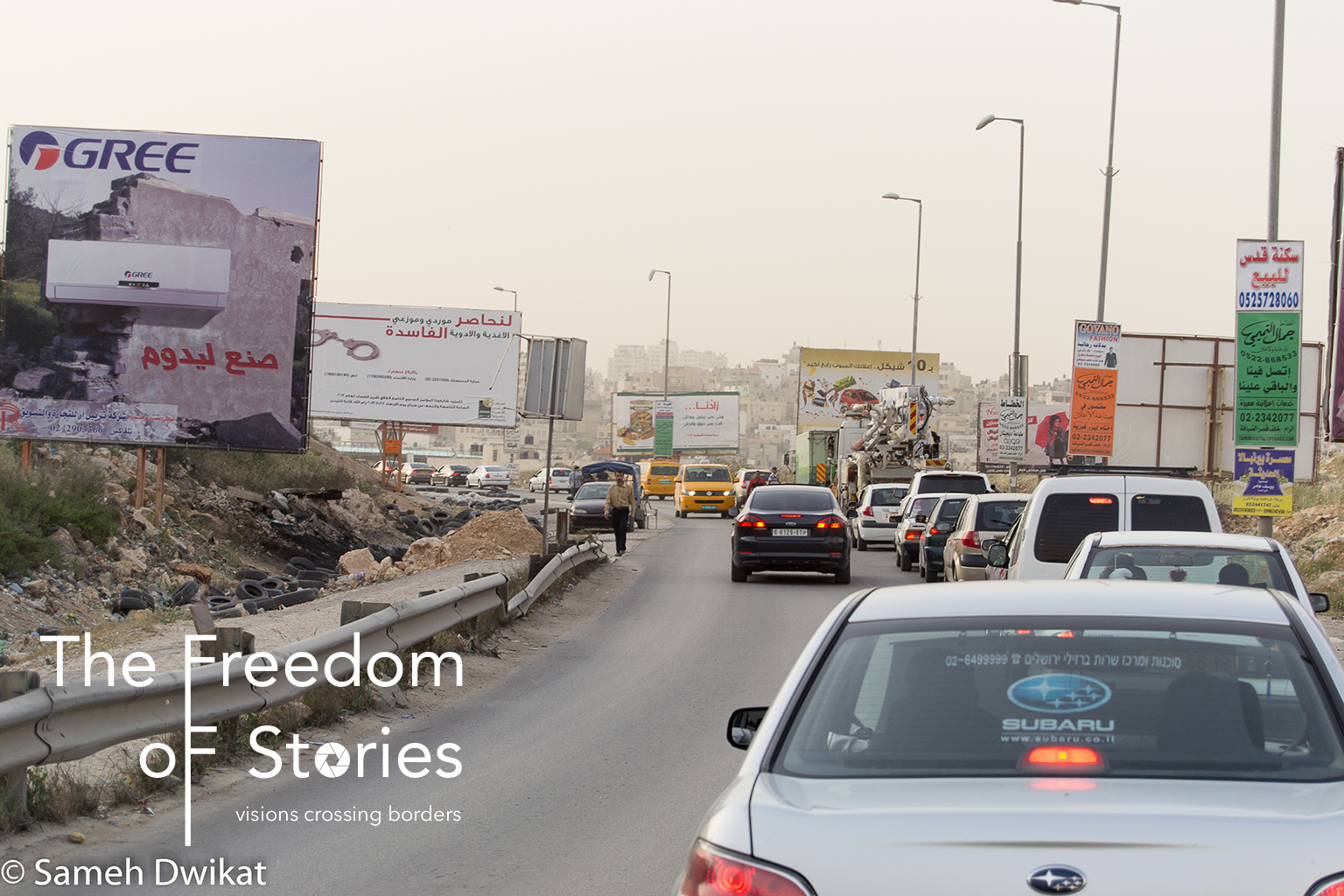“freedom is the meaning of life. If we are born without it, we never really live.”
During the summer of 2012 I (Najat el Hani) visited Israel and The Occupied Palestinian Territories for volunteering purposes. For the duration of almost one month I attended a program organized by the International Youth Exchange Program – Zajel at the An-Najah National University in Nablus, Palestine. It was during this travel when I met Sameh Dwikat in downtown Nablus for the first time. A recent graduate in architecture and passionate advocate for the liberation of Palestine. Sameh then shared that he wanted to change the world by sharing his stories, not only by volunteering for such programs, but also through photography.
In the summer of 2016 I attempted a second visit to the region in order to meet with Sameh again and work on the Freedom of Stories project.
Sadly however, I was unable to make it through the Jordanian and Israeli border, also known as the Allenby Bridge. Reason for this was my former visit to the region and activities as a volunteer at the An-Najah University. According to the Israeli Defence Forces this was seen as a threat. And thus, after a 10 hour wait at the border I was sent back to Jordan. To say the least about other emotions and thoughts it was sad that a peaceful contribution to society led to not (ever) meeting Sameh again. After disappointedly writing the withdraw of my visit to him he writes the following back: ‘You are always welcome to me, they can do whatever they want but they can’t take our freedom from us.’ And so, he shared his untold stories through the world wide web, hoping it will lead to positive change and constructive peace building from the other side of the wall.
Life During Occupation
The conversations held with Sameh mainly evolved around one specific theme: life behind the Israeli separation walls and impacts of growing up within an occupied territory. Not only does this entail restricted movement outside the Palestinian West Bank and/or Gaza, but also the movement within these regions. Striking are Sameh’s explanations about the insecurity of not knowing what will happen next, having to walk 1,5 kilometres to the University because the roads are blocked by Israeli Defence Forces, the emotional normalization of daily conflict, effects it has on children, violence, local checkpoints and frustrations. But even more striking is Sameh’s hopeful smile when he expresses his power to continue and strive for local changes and hold on to the beautiful things in life such as arts and humour. Through his work as an architect he aims to rebuild the demolished parts of Palestine. For this series, he images a selection of daily situations between the walls, aiming to share his life with humans living at the other side of separation.
1. Hisham Palace
This picture is taken from a room in Hisham Palace, Jericho. Looking outside represents looking for freedom from the other side of a separation fence.

2. Qalandia Check point, Ramallah
This image shows one of the many lengthy traffic jams near the Qalandia check point in Ramallah. Under normal circumstances it should not take more than 5 minutes to pass. But due to many checkpoints such as these it can usually take hours before crossing to the others side. Sometimes you will encounter bizarre circumstances such as ambulances that cannot rush to the hospital or brides in white dresses that are stuck from uniting with their other half behind the checkpoint.

3. Micro Revolt
This picture is taken during one of the many protests in Nablus. It shows a group of youngsters revolting against the Palestinian Liberation Organization (PLO). Minor uprisings such as these are not uncommon when certain political decisions have been taken. Often civilians show such discontent out of desperation and a final way to express themselves against higher forces that do not take their voices into account.

